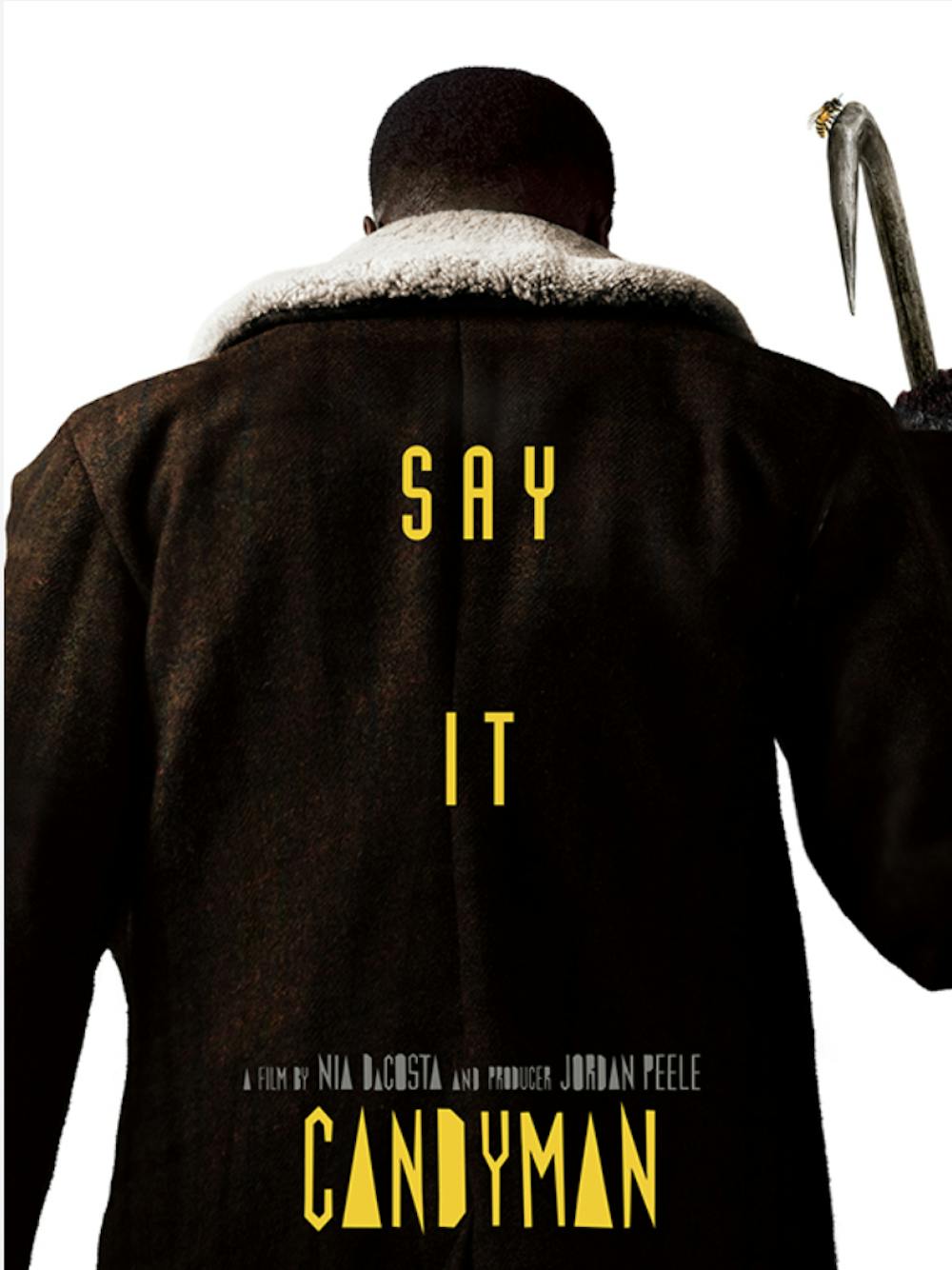By Maia Venuti
Staff Writer
“Candyman” (2021) is the revival and sequel to the original film with the same title from 1992. Directed by Nia DaCosta and written by Jordan Peele, the film takes place in modern day, almost thirty years after the original “Candyman” film.
In a now renovated Cabrini Green, Chicago, struggling artist Anthony McCoy (Yahya Abdul-Mateen II) lives with his girlfriend Brianna (Teyonah Parris), when he begins to research Cabrini Green’s past: the projects. Through this, he learns of the horrific, violent crimes that occurred in the past, and the legend of Candyman, which inspires his art. The more he learns about Candyman, the more Anthony’s mental state slowly begins to deteriorate, affecting everyone around him.
“Candyman” (2021) is beyond worthy of every bit of praise it has received. Nia DaCosta and Jordan Peele used this story to make not only a fantastic sequel of the story of Candyman, but to make social commentary about the Black community. The theme of gentrification and its negative impact on the Black community of Chicago and Cabrini Green is seen throughout, and the white ignorance of gentrification’s impact is used to further push this point. The white characters in the film show a large amount of ignorance toward the damage that gentrification did to low income communities of color like the pre-gentrification Cabrini Green community.
The acting and cinematography in this film make the story highly realistic, with the cinematography working with the story to further enhance the viewing experience. Also, the use of mirrors throughout the film was impeccable. The Candyman can only be seen in the mirror, so one can only see him committing acts of violence in mirrors and reflections. The film shows what appears to be an invisible force dragging the victims around and hurting them, but to the side of the screen not in focus, one can see the Candyman holding his victim by their feet, using his hook to kill them.
Without giving too much away, the most terrifying part of this film was the way that DaCosta and Peele were able to make a character as fictitious and unrealistic as the Candyman so real. Peele uses horror to not only create a feeling of fear, but also to start a conversation about racial injustice in the world through an uncomfortable medium. The real reason for the existence of the Candyman is systemic. The commonality between the many Candymen throughout the centuries is that they were all Black men killed by white people and police in brutal, unspeakable ways, for nothing more than the color of their skin. Every Candyman was an innocent and harmless person who was hunted down and brutally murdered for something they cannot control. Candyman’s immortality in the Cabrini Green Chicago area comes from generations and generations of systemic racism and abuse of the Black community. He is not just one person; Candyman is a manifestation of hundreds of years of violence, trauma and an incomprehensible Black pain that people of color have endured for far too long.
There is a line said by a character named William in conversation with Anthony that gave me chills throughout my whole body both times I saw this film.
“Candyman is how we deal with the fact that these things happen. That they’re still happening,” in reference to the centuries of innocent Black men who have been murdered by racist white people and white police.
This line sat with me and breathed an indescribable sense of life into this classic horror character, giving him depth that is not seen in other horror films.







